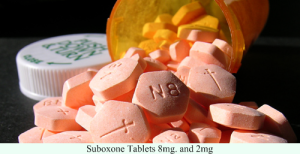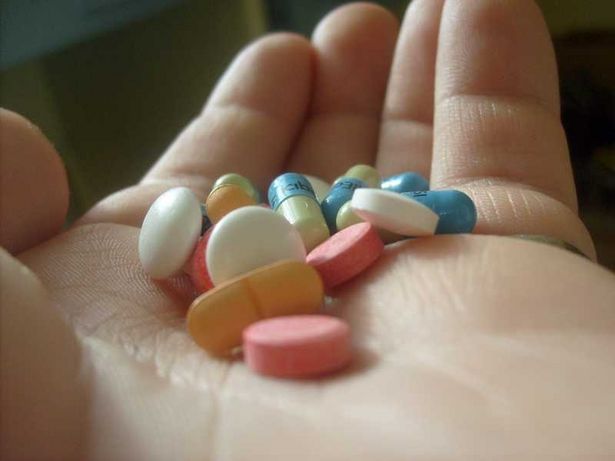What Makes a 5-Star Drug and Alcohol Addiction Treatment Center?
5-Star Drug and Alcohol Addiction Treatment Centers
What makes a drug and alcohol treatment facility 5-stars? Drug and Alcohol Addiction treatment facilities are found near, but not normally in populated areas. Some facilities will make sure that they are as far away from the beaten path as possible. The location has nothing to do with the quality of the service. When people think of the rating, they often think of the luxury of the facility. This is only one of the factors contributing to their success. Offering alternatives to twelve-step programs is another key component.
Rehabilitation programs, like any other type of heath care organizations, rely on the strength of the people they employ. Every drug and alcohol program needs to hire certified counselors who understand the drug and alcohol recovery process. They should be familiar with the twelve-step program, but they need to be familiar with other methods as well. Each individual counselor needs to be a good listener.
Make The Call That Can Save Your Life
877-611-4318
5-Star Treatment Counseling and Luxury Surroundings
The counselors and the staff also look into the situation that led a person to drugs in the first place. People often choose drugs or alcohol as a form of self-medication. Does someone need to undergo treatment for an underlying condition? Does the client’s living situation make him more likely to return to drugs in the future? Does he have support in his area? All of these are important factors in a patient’s recovery.
Now, there are items that do relate to the luxury and surroundings of the facility. Most patients stay at rehabilitation facilities for about a month. The facility needs to have comfortable and clean beds. Food and recreational facilities are normally provided. The food may not be as good as a person can make at home, but it should be several steps above what a person would find in one of his local hospitals. Some places may have pools and tennis courts, but an individual patient may not have time to use these facilities.
Success ratio’s can make a treatment facility 5-Stars
It takes more than one factor to make a facility earn a top-ranking. In the end, it comes down to one thing however. Does the clinic have a good success rate? A patient who has time to plan to go into a rehabilitation facility can usually contact the owners or use the website in order to find out how well a particular company can do.
They will even find out important information such as costs and insurance information. Most addiction recovery programs are covered by health insurance, but some people can pay for these programs out of pocket. It is an extremely rare occurrence, but it does happen. The five-star rating may not be as important as whether or not a person stays off his drug of choice when he gets back to his home. He will probably still have it as his drug of choice, he will just abstain from it.
Make The Call That Can Save Your Life
877-611-4318
Opiate Detox Is Imperative For Recovery
Opiate Detox: Opium and opiate addictions have been around for quite a while; Opium, which is what opiates derive from, was one of the first drugs to be used recreationally. This recreational use leads to the need for Opiate detox. An addiction to opiates is a serious problem that can lead to long term health issues and even death. For this reason, recovery is crucial. Someone looking to recover from an opiate addiction must undergo opiate detox. This will allow an addict to get the harmful toxins out of their body. Once detox is completed, rehabilitation is the best course of action in order to truly kick the addiction.
Make The Call That Can Save Your Life
 877-611-4318
877-611-4318
Why Opiate Detox
Opiates are from the opium poppy, which come from poppy seeds. There are a variety of opiates, although the most common abused include: hydrocodone, oxycodone, and oxymorphone. These opiates are classified in a group that contains benzylisoquinoline alkaloids. Opiates are commonly used to treat pain. Morphine and hydrocodone are common prescription pain relievers. However, in addition to those becoming addicted to their prescriptions others further abuse the drug by snorting it. They greatly reduce pain, however, if abused they can create serious health problems and even lead to death. This is why detox is so important. Without Opiate detox an addict is risking not only their health, but their life.
The Need For Opiate Detox
A person who is addicted to opiates may have a variety of signs and symptoms. These include an inability to control their drug related behavior. A lack of interest in those activities they previously enjoyed. Other symptoms consist of continuing to use the drug even though they are made aware of the harmful side effects. Physical symptoms include cramps, chills, tremors, extreme pain, tachycardia, flu-like symptoms, and excessive perspiration. Once a body becomes used to the opiate in it’s system it will think that it cannot function without it. This is when opiate detox is needed.
Opiate Detox
Opiate detox is the first step when it comes to recovering from an addiction. However, it is also the most dangerous aspect of recovery. For this reason it is not recommended that anyone do it at home. Detox should be conducted in a safe, comfortable environment, with medical professionals. Withdrawal can be painful and can have serious consequences including cardiac issues, stroke, seizures, and even dehydration. For this reason it is necessary that it be done in an environment with medical supervision. Medically monitored detox is important as it provides a safe and secure atmosphere. It also allows for the dispersal of medicine that can aid the detox process such as suboxone and methadone which can ease the pain of withdrawal. Once the body is rid of the toxins that have built up due to the addiction recovery can be achieved. Detox can last between a few days and weeks depending on the severity of the addiction.
Anyone who is suffering from an addiction to opiates should seek medical attention as soon as possible. Without medical intervention it is very difficult for an addict to recovery. Detoxing alone is very dangerous and not recommended. Once opiate detox has been completed, recovery can happen, and an addict can get their life back.
Make The Call That Can Save Your Life
877-611-4318
Understanding the Basics of Methamphetamine Treatment: What Works and Why
Do I Need Methamphetamine Treatment?
Methamphetamine treatment can be very difficult for doctors to treat and for patients to undergo because of the highly addictive nature of the drug. As a stimulant, it targets the central nervous system, causing a prolonged sense of pleasure and euphoria. It also increases one’s focus, energy, self-confidence and sexual ability. The problem with methamphetamine is that like every addictive substance, it has to be taken in increasing amounts in order for the user to achieve the same level and quality of “high” they had. Over time, meth users begin to suffer the effects of their addiction which can range from severe physical changes to mental deterioration. Learn more about what to expect regarding methamphetamine detox, it’s associated side effects and results.
Methamphetamine Treatment
There is no single methamphetamine treatment that can work for all recovering addicts. The type and duration of the treatment will depend largely on the individual. The more serious his dependence, the longer and more intensive his treatment will be. Breaking the addictive cycle to methamphetamine will also require long-term commitment, so the patient will need all the patience, determination and support he can get.
The primary treatment that will be given to the patient will consist largely of methods that will break his chemical dependency. Methamphetamine detox is performed carefully, since sudden withdrawal could cause permanent damage to the brain and raise the risk of death. As such, the patient is often recommended for in-patient treatment in a rehabilitation center. In this phase of the methamphetamine detox treatment, the patient will be monitored closely by medical personnel to ensure his safety.
Methamphetamine Detoxification
During the detoxification phase, the patient will experience symptoms associated with drug withdrawal including craving, depression, fatigue, anxiety, paranoia, irrationality, hypersexuality and cognitive impairment. The duration of the symptoms can last for a few days to about two weeks. To alleviate the severe conditions the patient is experiencing, medications may be given as part of the methamphetamine detox. These medications will help suppress the symptoms and ease the severity of the patient’s reaction as his body begins to wean itself of the drug.
In-patient rehab usually lasts for about one month, after which the recovering addict will undergo an outpatient methamphetamine treatment. Although methamphetamine detox can be physically and mentally taxing, successfully completing that phase is really just the beginning because the patient will have to go through continuing therapy to combat the addiction.
The Methamphetamine Matrix Model
A key component of the basic methamphetamine treatment is the Matrix Model which was initially used to treat cocaine addiction. The Model utilizes cognitive-behavioral therapy to change the patient’s pattern of behavior to allow him to develop the confidence and will to avoid using the drug. This phase of methamphetamine treatment is done on an outpatient basis.
This phase is as critical as the initial phase involving methamphetamine detox because the effects of dependence can last to as long as six months. During this period, many recovering patients experience strong craving for meth as they battle depression and anxiety. Many patients give in and use the drug. If this happens, however, the event should not be considered a failure but a good opportunity for the patient to discover and learn what triggers his craving. Doing so will help him predict his behavior pattern so he can find ways to change how he reacts.
The time factor should be considered carefully in order for the treatment to succeed. This is why patients must work closely with their counselors in order to achieve their goals and get enough support. Methamphetamine treatment is indeed difficult but it is not impossible with the right kind of approach.
Counselors Are Here To Help!
Call Us Toll-Free at 877-611-4318
Suboxone Treatment: Risks and Benefits
Why Get Suboxone Treatment
When someone suffers from opioid dependence, such as a heroin addiction, there are several options for
achieving freedom from this dependency such as suboxone treatment. Among the more popular treatments are substitutions. Addicted individuals treat symptoms of withdrawal from an opiate with another drug that is legally prescribed. Possible reliance on these drugs is easier to terminate. Suboxone is a drug recommended by many health officials to help addicts overcome withdrawal from opioid substances.
What Is Suboxone?
Another name for Suboxone is buprenorphine. It is used for a variety of reasons, including the treatment of chronic pain. It is semi-synthetic and can be administered in different ways.
Suboxone Treatment
Before beginning Suboxone treatment, patients and doctors need to review some possible sensitivities or complications that might be involved. Doctors need to know ahead of time if their patients suffer from any of the following issues:
• Asthma or other breathing issues
• Any disease of the liver
• An underactive thyroid
• Problems with urination
• Kidney Disease
• Adrenal gland disorders
• Past head injuries
• Mental illness
• Seizures
• Brain tumors
These complications will not necessarily disqualify patients from Suboxone treatment. Doctors can use the information to determine how effective treatment will be and how to gauge dosages in order to benefit patients the most.
Physicians usually prescribe doses of sublingual tablets. Before taking scheduled doses of this medication, patients should drink a glass of water to moisten their mouths. They are then expected to place the tablets beneath their tongues and allow them to dissolve.
An innovative new medicinal delivery system uses a Suboxone film. Patients have complained about the taste of the sublingual tablets and the amount of time that they take to dissolve completely. Suboxone film dissolves more quickly in your mouth and does not have as unpleasant a taste as the tablet form of the drug.
Patients taking any form of this medication should wear medical alert tags of some sort. They should also directly inform any health care provider of their prescription. This is a powerful drug that could complicate emergency treatments without proper warning.
Suboxone Side Effects
It is possible for patients to become addicted to this substance in place of the opiate to which they were first addicted. Clear and consistent communication with administering physicians is crucial for this reason. There are other possible Suboxone side effects. Some common issues include:
• Dizziness
• Difficulty in concentrating
• Numbness in extremities or in the mouth
• Insomnia
• Abdominal pain
Risks of Suboxone Treatment
Suboxone treatment use can also generate its own addiction. Some people use Suboxone for recreational purposes just as others might use heroin. For this reason, the initially high doses administered in the first few days of treatment are slowly lowered.
There are also significant Suboxone side effects that should be communicated to doctors immediately if they occur. These include shortness of breath, blurred vision and irregularities in the heart rate.
This is a powerful controlled substance that can do a lot of good. However, misuse of the drug can result in very dangerous Suboxone side effects. Patients should follow physician instructions carefully when receiving Suboxone treatment.








 Medical DetoxTreatment Center Finder has placed countless people into a medical detox for drugs and alcohol. We know what you are going through and will work to find the best detox for your individual needs. Learn More...
Medical DetoxTreatment Center Finder has placed countless people into a medical detox for drugs and alcohol. We know what you are going through and will work to find the best detox for your individual needs. Learn More... Inpatient TreatmentGetting into an inpatient treatment center is the best thing someone can do when facing an addiction to drugs and alcohol. Learn more about our network of residential facilities. Get Help Today...
Inpatient TreatmentGetting into an inpatient treatment center is the best thing someone can do when facing an addiction to drugs and alcohol. Learn more about our network of residential facilities. Get Help Today... Rehab In Your StateWe are here to help you find a rehab whether you are looking in or out of your state. Get away from addiction through one of our rehab centers - the top treatment centers in the nation. Find a Rehab...
Rehab In Your StateWe are here to help you find a rehab whether you are looking in or out of your state. Get away from addiction through one of our rehab centers - the top treatment centers in the nation. Find a Rehab...
